VENEZUELA
Caracas

Caracas
Caracas
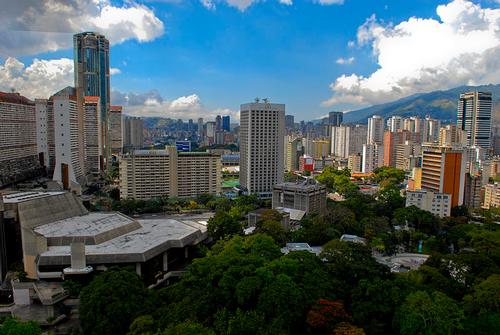 Downtwn CaracasPhoto: Paulino Moran (CC BY 2.0) no changes made
Downtwn CaracasPhoto: Paulino Moran (CC BY 2.0) no changes made
Caracas is the capital and largest city of Venezuela. The city is located in the northern part of the country, on the edge of the narrow valley of Caracas under the Venezuelan coastal mountain range (Cordillera de la Costa). The highest point in the old town is 900 meters above sea level. Caracas is close to the Caribbean Sea, but separated from the coast by a steep 2,200 meter high mountain range, the Cerro Ávila. The Caracas metropolitan area includes the capital and four other municipalities in Miranda state: Chacao, Baruta, Sucre, and El Hatillo. According to the 2009 census, the capital had 2,097,350 inhabitants, the metropolitan area had 4,196,514 inhabitants.
| advertisement |
| Hotels Caracas |
Location
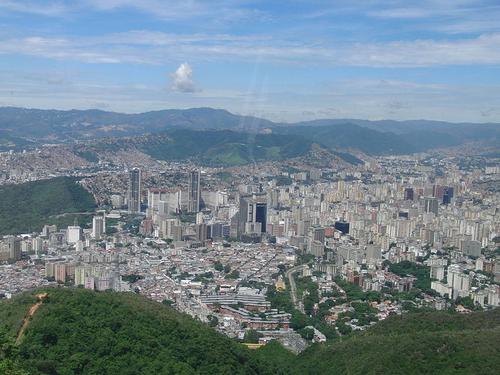 Caracas and surroundingsPhoto: Olga Berrios CC 2.0 Unported no changes made
Caracas and surroundingsPhoto: Olga Berrios CC 2.0 Unported no changes made
The coordinates of Caracas are: 10°30' north latitude and 66°55' west longitude. The city is separated from the Caribbean coast by the El Ávila National Park. The rapid population growth has been influenced by the urban development of the city. The 2,159 meter Pico El Ávila is the highest point in the region. The city is rich in fresh water. The river that flows through the city is the Guaire River which flows into the River Tuy. This river also receives water from two other rivers and from numerous streams of the El Ávila. Two large reservoirs supply water to the city.
Weather
Caracas has a tropical savannah climate. Annual rainfall varies between 900 and 1,300 millimeters in the city itself, to 2000 millimeters in the surrounding mountains. Due to the altitude of the location, temperatures are generally not nearly as high as in tropical locations at sea level. The annual mean temperature is about 23.1°C. The mean for the coldest month (January) is 21.1°C and the mean of the hottest month (May) is 25.0°C. In December and January it can be quite foggy. Nighttime temperatures are lower than during the day and the evenings are pleasant. Occasionally it hails and thunderstorms occur between June and October due to the position of the city below the Cerro ElÁvila. Due to the pleasant weather conditions throughout the year, Caracas is nicknamed "La Ciudad de la Eterna Primavera"- The City of Eternal Spring.
History
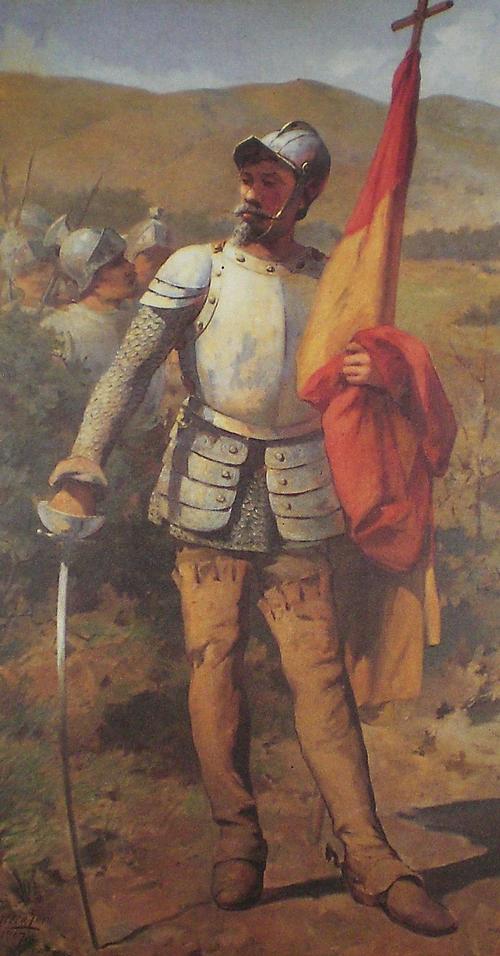 Diego de Losada conquers CaracasPhoto: Public Domain
Diego de Losada conquers CaracasPhoto: Public Domain
When the city was founded, indigenous peoples already lived there. In 1562, Spanish sailors attempted to establish a plantation in the valley to ensure supplies to their coastal towns. The settlement was soon destroyed. In the end, the native population could not defeat the Spanish. Captain Diego de Losada laid the foundations of the city of Santiago de León de Caracas on July 25, 1567.
Because the coastal mountains were an obstacle to pirates who wreaked havoc elsewhere along the coast in the 17th century, Caracas the most important city in the region. The cultivation of cocoa stimulated the development of the city. In 1777, Caracas became the capital of Venezuela.
The ideas of the French Revolution and the American Wars of Independence inspired the people. On July 5, 1811, a Declaration of Independence was signed in Caracas. This city was also the birthplace of two of Latin America's most important figures and of the Venezuelan War of Independence: Francisco de Miranda and Simón Bolívar. The revolt against the Spanish Crown lasted until June 24, 1821, when Simón Bolívar won a decisive victory over the Royalists.
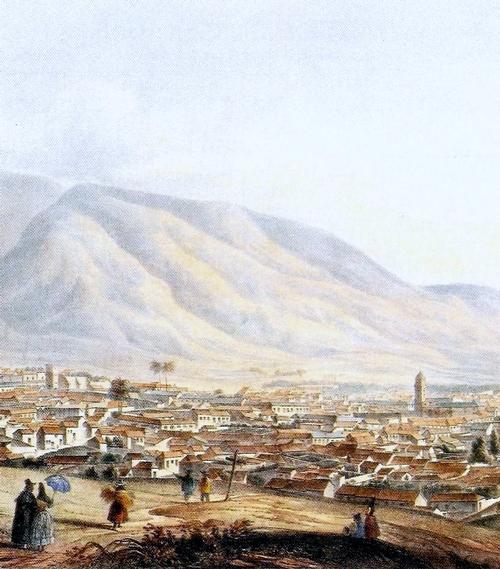 View of Caracas in 1839Photo: Public Domain
View of Caracas in 1839Photo: Public Domain
Due to the petroleum discoveries, Venezuela's economy grew steadily during the early part of the 20th century. Caracas became one of the economic centers in Latin America. In the 1970s, the Universidad Central de Venezuela was designed by door the famous architect Carlos Raúl Villanueva, built. New residential areas expanded the city to the east and south. People from the countryside migrated to the capital in search of work and safety. As a result of this wave of sudden migration, a belt of slums arose in the valley.
Places of interest
Caracas attracts many tourists not only from America, but especially from Europe. There are many interesting historical monuments from the Spanish period of the city, but also from the modern era.
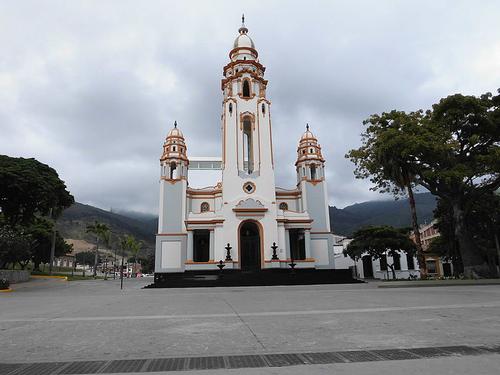 National Pantheon in CaracasPhoto: Carlosmatalive CC 3.0 Unporte no changes made
National Pantheon in CaracasPhoto: Carlosmatalive CC 3.0 Unporte no changes made
Tourists will definitely want to stop by the National Pantheon of Venezuela, Venezuela's most admired building, five blocks north of Plaza Bolívar on the northern edge of the old city. Here lie the remains of Simón Bolívar. Originally a church, it was converted for its new function by renowned architect Antonio Guzmán Blanco in 1874.
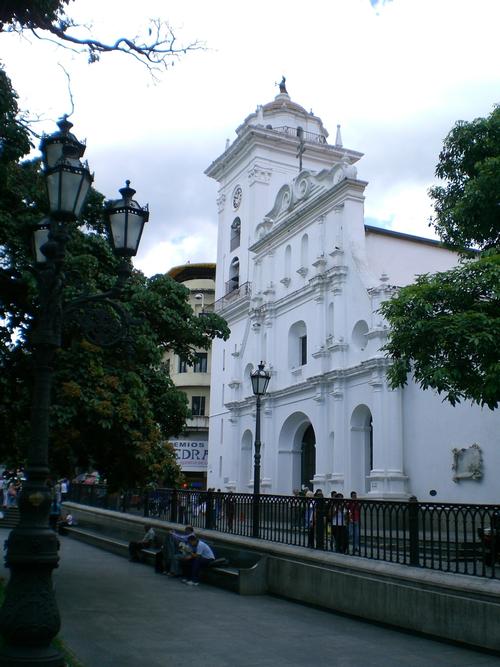 Cathedraal of CaracasPhoto: Guillermo Ramos Flamerich CC 2.5 Generic no changes made
Cathedraal of CaracasPhoto: Guillermo Ramos Flamerich CC 2.5 Generic no changes made
The Cathedral of Caracas is an attractive monument. Construction began in 1666 on the foundations of a smaller church that was destroyed by the earthquake in 1641. The new church was built in Romanesque style and next to the nave the cathedral has two small naves on each side. Octagonal columns with elaborate capitals separate the naves. Extremely valuable sacred paintings are displayed in this cathedral. Some of the most valuable are the Resurrection of Rubens, the Apparition of the Virgin by Murillo and The Last Supper, an unfinished work by this painter.
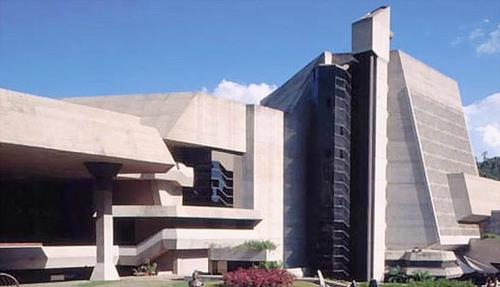 Teresa Carreno in CaracasPhoto: G Melean in the public domain
Teresa Carreno in CaracasPhoto: G Melean in the public domain
The Congress building is located on the southwest corner of Plaza Bolívar and has been the seat of Congress from April 19, 1810. The southern part is the current seat of the National Assembly. The Teresa Carreño is the main theater of Caracas and Venezuela, where symphonic concerts, operas, ballet and stage performances are performed. It is the second largest theater in South America, after the Teatro Colón in Buenos Aires in Argentina.
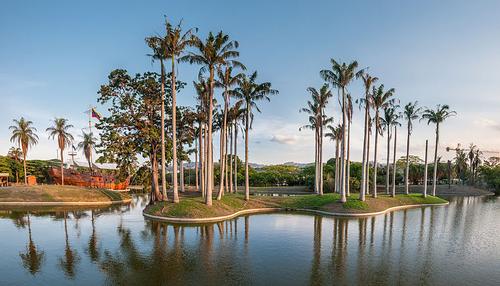 Parque Generalísimo Francisco de Miranda in CaracasPhoto: Wilfredor in the public domain
Parque Generalísimo Francisco de Miranda in CaracasPhoto: Wilfredor in the public domain
The Parque Generalísimo Francisco de Miranda designed by the Brazilian architect Roberto Burle Marx is a green paradise in the middle of the city. There is a small zoo with a replica of the ship commanded by Francisco de Miranda.
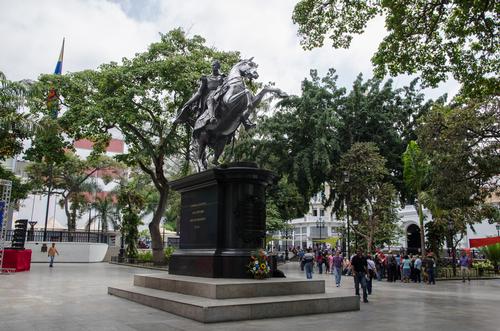 Plaza Bolivar in CaracasPhoto: Noel-Fotografia in the public domain
Plaza Bolivar in CaracasPhoto: Noel-Fotografia in the public domain
There are numerous squares in Caracas. The most famous square is the Plaza Bolívar, the central place in the old town with the monument of El Libertador, Simon Bolívar. Modern buildings and skyscrapers give a new look to the city. The Plaza Venezuela is the geographic center of Caracas. It is a large urban square at the entrance of the Central University of Venezuela. East of the Plaza is the Plaza Venezuela Fountain with music and colored light.
Tips
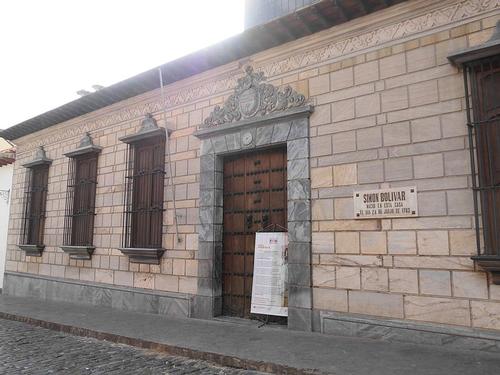 Casa del LibertadorPhoto: Carlosmatalive CC 3.0 Unported no changes made
Casa del LibertadorPhoto: Carlosmatalive CC 3.0 Unported no changes made
Tourists will definitely want to visit the birthplace (Casa del Libertador) of the nationalhe hero and liberator Simón Bolívar. The house, where Simón Bolívar was born on July 24, 1783, has been beautifully reconstructed in the colonial spirit. The museum displays weapons, flags and uniforms, among other things. Monumental paintings with fighting scenes hang on the walls. In the nearby Bolivarian Museum, the chest contains the remains of Bolívar that were transported from Colombia and many other personal items are also on display.
Useful links Caracas
BBC Country ProfilesWorld Fact Book Explore all Countries
How to call
Last updated June 2025
Copyright: Team - The World of Info